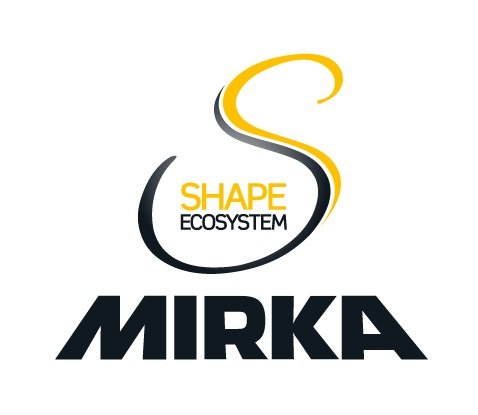Boosting Circularity: My Journey and Lessons Learned
Halfway in the SHAPE program it’s time for some reflections and we have talked with our work pack leaders asking them to share their insights. First out is Petra Härmälä, Technoloy Manager at Mirka and work pack leader for Boosting Circularity. Here you can read about her journey and lessons learned so far.
“Little did I know, 2-3 years ago, about the challenges and opportunities related to circular economy”, Petra says. And maybe that in the end is a good thing, that I’ve learned along the way, handling boosting circularity with curiosity and a positive mindset, but not saying that it has been easy”.
In work package Boosting Circularity the focus is on accelerating circularity by improving production processes, focusing on product development and extending product lifecycles. In practice this means using resources wisely, keeping materials in circulation and preserving their value as high and as long as possible, reducing waste, reviewing value chains and reclaiming and reusing products.
“We want to optimize our products, raw materials, and processes. The goal is to manage and preserve materials for a long time, keeping them in circulation as much as possible and in their original condition,” Petra says.
The starting point: Understanding the 10 R Strategies
An initial step to start the journey for circularity was to really delve into the 10 Rs (reduce, recover, recycle, repair, rethink, refuse, remanufacture, repuepose and regenerate) to get a grasp of the strategies that are most relevant from a manufacturing company's perspective. In conclusion, the higher you climb the ladder, the more challenging it becomes meaning that reduce, recover and recycling are quit established R-strategies in the manufacturing sector, although still needing further development. Repair, refurbish and reuse are strategies that manufacturers look into and see as a realativly easy to implement, since they also can generate a new kind of business and revenue. Rethinking design and business models are still quite challenging since they demand new ways of thinking and working. Refusing is difficult for manufacturing companies especially related to product range management and to decide what to produce, what to phase out from a sustainability point of view. The same goes for remanufacturing and repurposing since they might challenge feasibility and quality requirements set in companies.
“I personally think that the rengerate strategy is the most difficult strategy to grasp, says Petra, but now we have a good understanding of the 10 R strategy, what they could mean for our company and we have set the basics for how to integrate these for example through our circular design principles.”
We are on a journey
To establish circular design principles and integrate an ecodesign framework for product development is one of the key milstones so far in boosting circularity and important steps in Mirka’s strategy for circularity. Other milestones are finding different ways of how to visualize the current “circularity level” and testing methods of how to measure circularity. These are steps that need to be taken both to understand what circularity really means, to be able to improve and to achieve set circularity goals, such as rrepairability of and recyclable and recoverable content in Mirka’s products.
Different projects have also started to explore circular logistics with focus on material mapping, flow analysis and data gathering and the STAR co-innovation has been of great importance here. From waste to value is another focus area where sidestreams, both from own production and from other manufacturers are being evaluated and tested. Projects like Dust to Value, where waste from surface finishing processes are being evaluated for material components and REMIS, where waste from construction sidestreams are being evaluated for raw material, are giving input to this area.
“At the moment we have a really interesting test ongoing with recycled polyamid, says Petra. But we are still looking into more opportunities related both to new more sustainable materials, like in the BOOST project”.
Although a lot is going on there still are challenges to be solved. The “Multimaterial Challenge" is one of them and it refers to the difficulties in finding recycling routes and methods for multimaterial products like abrasives.
“Looking back at these two and a half years I can see that we taken some big steps in boosting circularity and the knowledge sharing and building within the ecosystem and our partners are of great importance, says Petra. But if I could make a wish, I would urge our partners and stakeholders to invest in innovative recycling technologies and systems that can handle multimaterial products, developing methods to separate and process different materials efficiently.”
